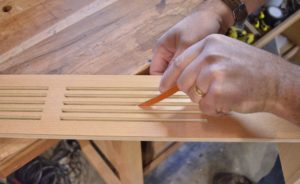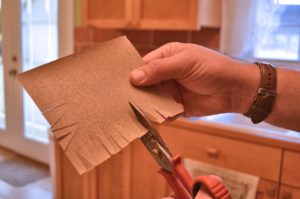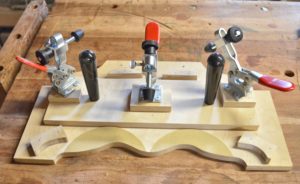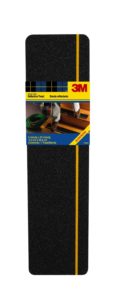3 Sandpaper Mashups
12 07 2013
Ok, yes, I used the terms mashup and sandpaper in the same title. But it really does work here. A "Mashup", for those of you without teenagers in the house, is repurposing songs or videos or some combination of them to create new content, and that is sort of what this post is about. I thought we might spend a few moments talking about uses for sanding supplies other than their designed purpose.

For example, as a kid I learned that my mother's emery boards were ideal ready-made sanding sticks for my model making. they were stiff, easily held, and came with both coarse and fine sides. They were sized well for model work and could even be cut or trimmed to fit small spaces. I still use them to this day when I meed a sanding stick for very tight openings like the vents on some toe kicks I made for my kitchen. They were made for manicures, but easily crossed over into my model making and then my woodworking as well.

A fairly common tip handed out in "Happy Homemaker" type columns in newspapers (do they even exist anymore?) is to sharpen scissors by making repeated cuts into a sheet of sandpaper. This actually works since to work properly, scissors need to have cutting edges that are quite flat and straight that shear against each other. Through use and abuse, the edges can be nicked and worn. Slicing up a sheet of fine (220 grit or finer works best) sandpaper restores the edge smoothness. But I will throw in a marital hint here; DO NOT try this with your wife's prized fabric shears! And please do not ask how I know this.

In the shop I use a lot of sleds, jigs and fixtures as I work. These often require a small part to be firmly held in place as a part is being cut. A bit of sandpaper on the face of the jig greatly increases the friction between jig and part and helps hold it in place. Fine, but not too fine grits work best. 80 grit might mark the part, especially if used with clamps, and the surface is too rough to rely on the part sitting as flat as possible. 600 grit is very flat, but might be too fine to really add any grip. 180 to 320 is the right range for this task.
 And, of course, once we think of sandpaper as increasing friction, it is a small step from jigs to ladders, step stools and the like. Very heavy grit (40-60) sanding supplies have been used as "non-skid" material for years. In fact, when I recently needed to buy some, they were sold with "grit" ratings even though they were completely unsuitable for sanding! But if you need to re-cover a step on your stool or add a bit of traction around an entry way, an old sanding belt can be "up-cycled" to this purpose. Cut into strips and apllied with contact cement, it can prevent loss of footing for virtually no cost!
And, of course, once we think of sandpaper as increasing friction, it is a small step from jigs to ladders, step stools and the like. Very heavy grit (40-60) sanding supplies have been used as "non-skid" material for years. In fact, when I recently needed to buy some, they were sold with "grit" ratings even though they were completely unsuitable for sanding! But if you need to re-cover a step on your stool or add a bit of traction around an entry way, an old sanding belt can be "up-cycled" to this purpose. Cut into strips and apllied with contact cement, it can prevent loss of footing for virtually no cost!
If you have repurposed sanding supplies outside the shop, or found unusual abrasives that are not normally found in the shop, share them with us. You can share them by commenting here on this blog, on our Facebook page, or via Twitter. -2Sand.com

